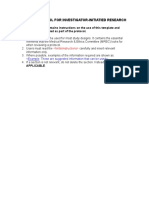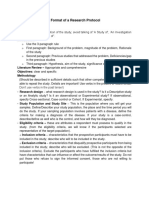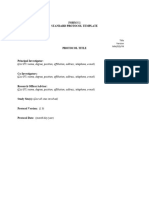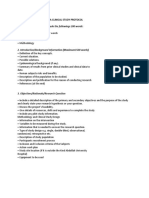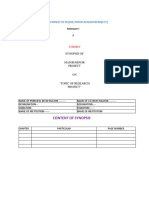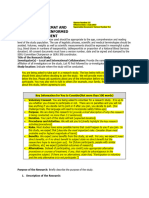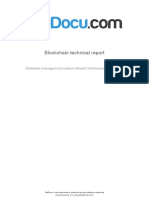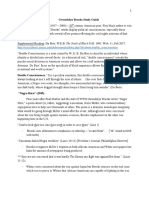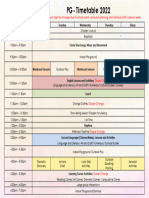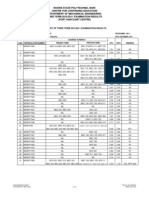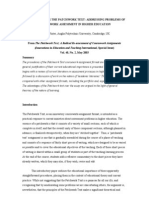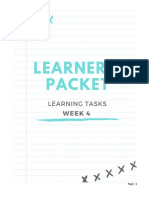0% found this document useful (0 votes)
6 views12 pagesProtocol Guidence
The document is a comprehensive reference guide for creating a research protocol template, detailing sections such as synopsis, objectives, methodology, study population, procedures, data management, and ethical considerations. Each section outlines specific requirements and guidelines to ensure clarity, compliance, and thoroughness in research design and execution. The guide emphasizes the importance of ethical oversight, participant safety, and effective data management throughout the research process.
Uploaded by
afrin.abotCopyright
© © All Rights Reserved
We take content rights seriously. If you suspect this is your content, claim it here.
Available Formats
Download as DOCX, PDF, TXT or read online on Scribd
0% found this document useful (0 votes)
6 views12 pagesProtocol Guidence
The document is a comprehensive reference guide for creating a research protocol template, detailing sections such as synopsis, objectives, methodology, study population, procedures, data management, and ethical considerations. Each section outlines specific requirements and guidelines to ensure clarity, compliance, and thoroughness in research design and execution. The guide emphasizes the importance of ethical oversight, participant safety, and effective data management throughout the research process.
Uploaded by
afrin.abotCopyright
© © All Rights Reserved
We take content rights seriously. If you suspect this is your content, claim it here.
Available Formats
Download as DOCX, PDF, TXT or read online on Scribd
/ 12






